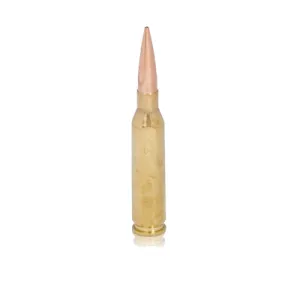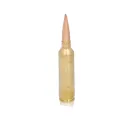
Following the immediate success of the .300 WSM in 2001, the .270 and 7mm WSM were introduced in 2002. The last of these cartridges, the .325 WSM, was introduced in 2005.
Like its siblings, the .270 WSM has gained a steady following for a variety of reasons. One of the foremost factors in the success of these cartridges has been the reduction in both size and weight of rifles in comparison to traditional magnum chamberings. The .270 WSM has also given fans of the .270 Winchester a cartridge which boasts greatly enhanced performance supported by readily available factory ammunition.
These cartridges have quickly became popular world wide, with a variety of ammunition found in gun stores around the world. The WSM’s have also received a small amount of negative criticism. Poor magazine to chamber feeding and excessive pressures resulting in difficult extraction have been major complaints. Both of these issues have been addressed at a design level. The most recent of complaints has been the cost of ammunition, ever rising due to metal market demands in developing nations.
The .270 WSM is the third in what is now called the trio of .270 (.277”) caliber commercial cartridges. These include the .270 Winchester, .270 WSM and the .270 Weatherby Magnum.
The .270 WSM sits roughly halfway between the .270 Winchester and .270 Weatherby Magnum in power. Hand loads and more especially the Hornady Light Magnum loads for the .270 Winchester can come close to .270 WSM velocities however, the WSM is able to achieve its goal velocities with relative ease.
Firing 130 grain bullets at between 3250fps and 3300fps, the .270 WSM is capable of delivering high shock for impressively fast killing out to ranges of around 300 yards along with clean but sometimes slightly delayed killing out to 400 yards. After approximately 500 yards, wound channels become proportionate to the expanded bullet.
With heavier 150 grain bullets driven at 3150fps, the increase in BC produces the same killing performance over varying ranges as the lighter 130 grain bullet weight. The .277 caliber absolutely shines when loaded with 150 grain bullets to 3000fps and faster, producing fast kills and deep penetration on a huge variety of game. By the same token, the .270 WSM is not so powerful as to push 150 grain bullets up into the 3200-3300fps ultra velocity range. Ultra velocity can, if the projectile is not designed to operate as such, cause excessive stress to projectiles at close to moderate range impact velocities with a seemingly unusual drop in killing performance. The WSM avoids this problem to a larger degree.























